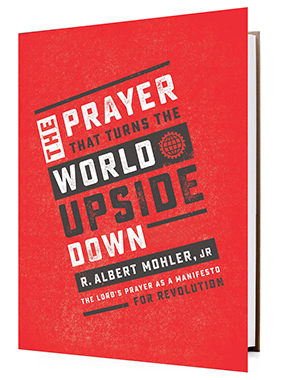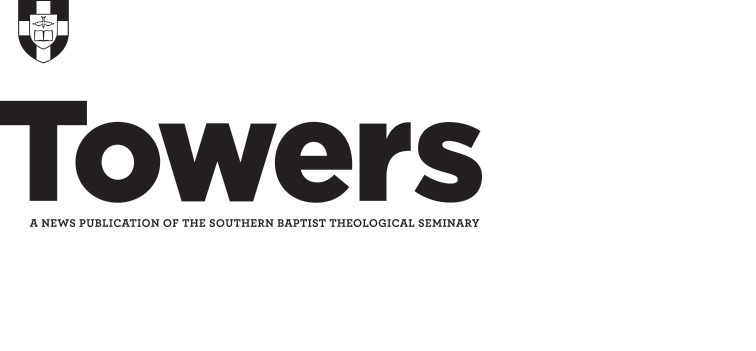The Prayer That Turns the World Upside Down: The Lord’s Prayer as a Manifesto for Revolution
R. Albert Mohler Jr.
The Lord’s Prayer is a revolutionary and earth-shattering manifesto for God’s eternal reign in heaven and earth, writes R. Albert Mohler Jr. in his new book, The Prayer That Turns the World Upside Down, which released in January.
 This famous prayer has a central message, according to Mohler: the Lord alone reigns. The words in the prayer call for God’s kingdom to come and for his will to be done on earth as in heaven — Mohler calls these the “most revolutionary words human beings could imagine.”
This famous prayer has a central message, according to Mohler: the Lord alone reigns. The words in the prayer call for God’s kingdom to come and for his will to be done on earth as in heaven — Mohler calls these the “most revolutionary words human beings could imagine.”
“This short prayer turns the world upside down,” Mohler writes in the introduction. “Principalities and powers hear their fall. Dictators are told their time is up. Might will indeed be made right, and truth and justice will prevail. The kingdoms of this world will all pass, giving way to the kingdom of our Lord and of his Christ.”
Most people recognize the familiar refrains of the prayer Jesus taught to his disciples in Matthew 6:9-13 and Luke 11:2-4. It’s recited at graveside services and before high school football games. But people often don’t understand the words they’re saying, according to Mohler.
The book is part of Mohler’s effort to teach on a popular level three of the most central texts in biblical Christianity. Historically, the church has stood on a three-footed stool of instruction: the Ten Commandments, the Lord’s Prayer, and the Apostles’ Creed. This book is the second in a trilogy exploring those three foundational texts, with his 2009 book, Words From the Fire: Hearing the Voice of God in the Ten Commandments, being the first installment. He plans to write a book on the Apostles’ Creed in the near future.
One of the dominant forms of prayer in American culture is that of supplication and intercession — asking God to use his power on the behalf of believers. Many Wednesday night prayer meetings become a laundry list of requests regarding the health of family members or for wisdom in decision-making.
That way of praying is not wrong, Mohler said. God commands Christians to bring their concerns before the Father. But prayer is more than that. Prayer is oriented toward the kingdom of God. It is not merely supplicational; it is eschatological. It is motivated by a desire to see the world made right through the spread of the gospel, Mohler writes.
Commonly, evangelicals resist formulaic or premeditated prayers, but Mohler suggests the Lord’s Prayer provides a model for all believers to follow, just as the disciples did. Not all prayer has to be spontaneous, he said. Neither is it helpful to approach God in a conversational or relaxed way. Rather, the church should embrace established forms of prayer like those found throughout the Scriptures — the kind of prayer that recognizes God’s reign over all things and submits to him as both Lord and Father. The Lord’s Prayer is not innate, but taught to followers of Jesus by Christ himself.
“Every generation of Christians must learn to make the request, like the disciples before them, ‘Lord, teach us to pray,’” writes Mohler. “Every generation of Christians must also remember that Jesus’ response to that question now is the same as it was two thousand years ago. If we would have the Lord himself teach us how to pray, then we must turn to the Lord’s Prayer for instruction.”
The book opens with an overview of the discipline of prayer in Chapter 1, then moves to a line-by-line exposition of the Lord’s Prayer in subsequent chapters. It concludes with an epilogue about the doxology (“For yours is the kingdom and the power and the glory forever, Amen”), which is likely not original to the text of Matthew but is still right for worshipping Christians to pray, Mohler writes in the book.




